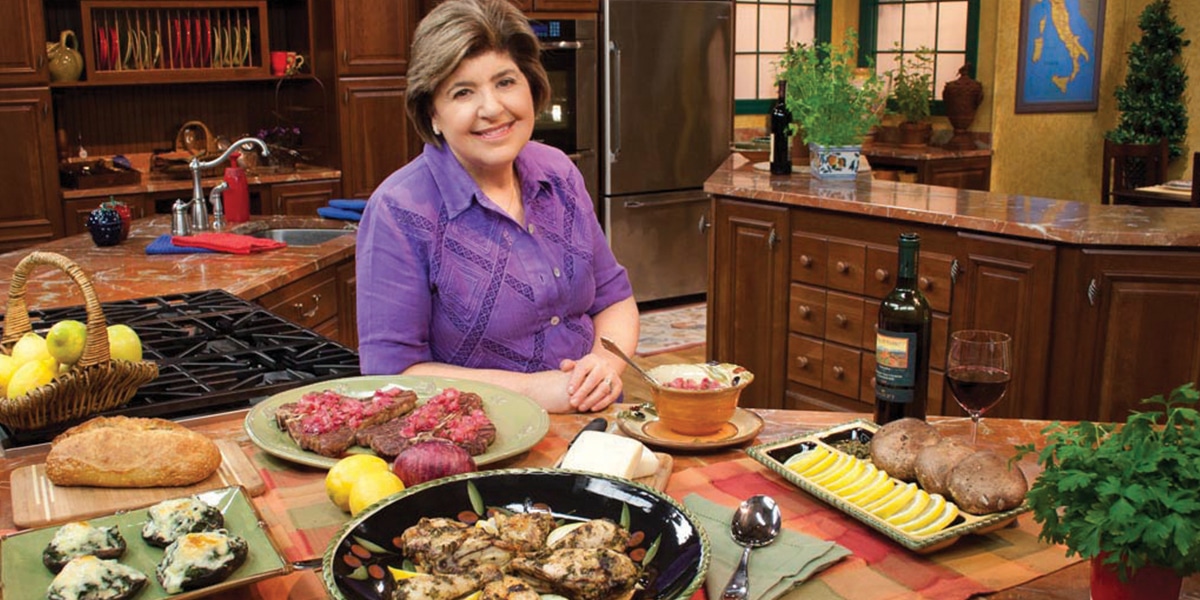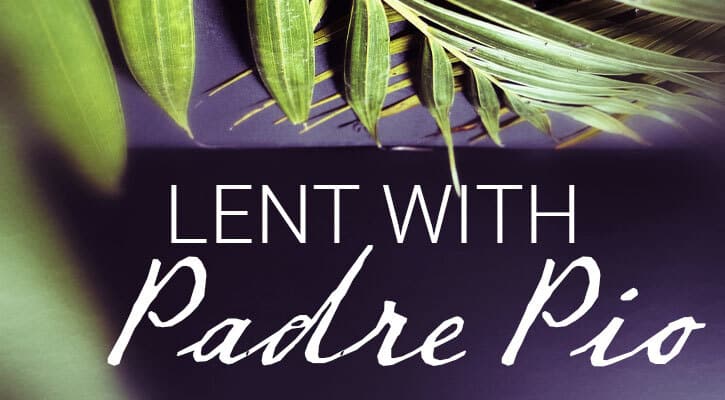Mary Ann Esposito draws on all three of these ingredients as she shares Italian culture and recipes on Ciao Italia, the nation’s longest-running cooking show.
At first glance, Durham, New Hampshire, may seem an unlikely setting for an Italian cooking show. While New York, New Jersey, Rhode Island, and Massachusetts are known for their large Italian neighborhoods, America’s Granite State has far fewer such areas. Yet it is from this New England town that chef and food historian Mary Ann Esposito hosts Ciao Italia, the longest-running cooking show on US television.
Each week, more than 5 million viewers tune in as Mary Ann imparts lessons not only in Italian cooking, but also in Italian history and civilization. “Ciao Italia has always been a show devoted to not just food but culture as well, and viewers like this concept,” explains Mary Ann. Her loving memories of growing up in a large Italian American family punctuate almost every episode. Included among them are the many traditions of her family’s Catholic faith that are a part not only of Mary Ann’s life experience, but of her recipes as well.
Broadcast by PBS since 1989, Ciao Italia was born of a suggestion by Mary Ann’s husband, Dr. Gaetano (Guy) Esposito. “One day I was typing up some recipes,” explains Mary Ann, “and Guy said I should put them together for a show on our local cable.” Not expecting much, she sent a proposal to the general manager of the local public television station who initially declined, but later reconsidered when the station sought to expand its programming.
Twenty-nine seasons, 13 cookbooks, and nearly 700 episodes later, both Ciao Italia and its founder and host are considered synonymous with authentic regional Italian cooking. The secret ingredients to the show’s huge success? “My mother and grandmothers are at the heart of Ciao Italia,” she says with affection, “and I try to keep them alive through the recipes and stories on the show and in the books.”
Though she was born and raised in a suburb of Buffalo, New York, the roots of both sides of Mary Ann’s family are firmly planted in Italy. Paternal grandmother “Nonna” Maria Saporito emigrated to Rochester, New York, from Caltanissetta in the central part of Sicily, while “Nonna” Anna Galasso came to Buffalo from Bellizzi, near Naples. Nonna Saporito owned a butcher shop in Fairport, New York, where her granddaughter would spend school vacations helping out. Nonna Galasso shared a home with her daughter Louisa and her son-in-law Roy (Mary Ann’s parents) and their five sons and two daughters. Remembers Mary Ann, “We lived in a big house in an Italian American neighborhood surrounded not only by family, but by friends whose families had also settled in the area after leaving Italy.”
As she grew up in a traditional Italian Catholic family, faith played as much of a role in daily life as did family and food. Mary Ann has “lots of fond memories of loving Catholic school, with nuns and more nuns” at St. Mary’s in Lancaster, New York, part of St. Mary’s Parish, where her family worshipped and received the sacraments. She remembers many family Baptisms, first Communions, Confirmations, and weddings, featuring “lots of picture taking and parties to commemorate each occasion. Sunday was a big family dinner day with all the relatives after Mass,” recalls Mary Ann. “That’s a memory that has stayed with me all my life.”
Her family’s strong devotion to the Blessed Mother included recitation of the rosary every evening, as well as daily Mass, lighting candles, and lots of prayer. “There were statues of saints everywhere, and our family’s patrons were St. Lucy and St. Anthony,” says Mary Ann. “Every morning, rain or shine, Grandma Galasso would get up early and walk the mile or so to attend Mass at Our Lady of Pompeii Church. On Saturdays, I would often go with her. She always sat in the first pew and read from a fragile, thumb-smudged Italian prayer book.”
In her first companion book to Ciao Italia, Mary Ann describes her family’s special celebration of St. Joseph: “Of all the saints’ feast days, none was more sacred in our home than St. Joseph’s Day. After attending Mass, my grandmothers would get to work making the food for the table to honor San Giuseppe. A solemn statue of St. Joseph stood on the best lace tablecloth in the center of the dining room table. Around him were plates of food, flowers, and candles. There were breads of many sizes and shapes, but what I really looked forward to were the sfinci, fried puffs of dough. [For the recipe, visit CiaoItalia.com.] They were mounded on large decorative trays and brought to the table. I would reach for the sfinci, only to get a tap on the wrist from Grandma to remind me that we pray first, then eat.”
Mary Ann spent countless hours with her mother and grandmothers, helping to make bread, can vegetables and fruits, and prepare meals. Her earliest memory of cooking was helping to make maccheroni, known in today’s parlance as pasta. “When I was a kid, old broom handles propped between kitchen chairs, holding rows of golden yellow pasta in various shapes and sizes, were a familiar sight. Homemade spaghetti, fettuccine, and lasagna sheets were staples in my house.” Another clear memory involves her mother and grandmother baking bread. Despite the absence of high-powered mixers, blenders, and other utensils, Nonna Galasso or Mamma made bread daily, upwards of 20 loaves a week, even during the summer.
It was at St. Mary’s High School in Lancaster that Mary Ann met her future husband, Guy, who followed a path in medicine as an orthopedic surgeon. After graduation, Mary Ann continued on to what was then Rosary Hill College, now known as Daemen College, in Amherst, New York, where she completed a degree in education. Mary Ann and Guy were married in 1968 at St. Mary’s Catholic Church back in Lancaster. Their reception featured many homemade foods, including pyramid displays of Italian cookies and a wedding cake—both made by Mamma Louisa. After they married, Mary Ann taught high school for a few years before dedicating herself full-time to the care of her daughter, Beth, and son, Christopher.
It was during the couple’s first trip to Italy in 1980 when Mary Ann took an actual cooking class, realizing that years spent watching and working with her mother and grandmothers had already exposed her to much more than the teacher was offering. She turned her attention to Italian regional cooking, traveling to Italy twice a year to research, study, and test foods representative of the 20 regions of Italy. Back home in Durham, Mary Ann took courses at the University of New Hampshire in history, food history, and Italian, completing a master’s in history in 1991.
As Ciao Italia grew in popularity, producers took Mary Ann out of the kitchen and into the actual towns, villages, farms, markets, purveyors, and manufacturers of the foods and ingredients featured in her show. This real-life setting greatly increased the authentic regional aspect of the show. With Mary Ann as their guide, viewers have been treated to a unique combination of culinary and cultural adventures in all 20 regions of Italy. “And I love them all!” Mary Ann insists emphatically.
Mary Ann has welcomed many special guests to share her Ciao Italia kitchen, but none more special than Louisa Saporito, her beloved mother. Before she passed away in 2008, Louisa appeared on several of Mary Ann’s shows to demonstrate some of her family recipes right in her own basement kitchen in Buffalo. A reflection of the generation in which she was raised, Louisa devoted her life to her home, her husband, and their seven children, as well as to the care of her mother, the beloved Nonna Galasso. After raising her children, Louisa returned to school while in her 50s, becoming a dietician.
The freshest, highest quality ingredients are the key to incredible recipes, insists Mary Ann, and she is lucky to have those literally at her doorstep. Guy Esposito is, in his wife’s words, “an incredible gardener” and has been since his college days at the University of Rochester.
With the passing of the years, Guy’s garden grew exponentially, and he is now able to boast of a garden with more than 100 plants. While he has been an orthopedic surgeon for more than 50 years, Guy is happy to be known as “The Vegetable Garden Doctor,” able to take any garden from seeds to sprouts to saplings and to storage for his wife’s use in the Ciao Italia kitchen.
Her television series and cookbooks are not the only means through which Mary Ann connects with fans. She has enthusiastically embraced social media, the Internet, and video streaming to teach her worldwide classroom. The Ciao Italia website features nearly 2,000 recipes, instructional videos, commentaries, cultural facts, personal stories, and more. Mary Ann posts on Facebook at least once a day and personally answers questions submitted from her more than 35,000 followers. Instagram and Twitter accounts are filled with photos, recipes, and tips.
Now entering its 30th season, Ciao Italia is still growing in popularity and recognition. While the first 26 seasons were filmed in a studio kitchen, the past three seasons have been broadcast right from Mary Ann’s home kitchen in Durham. Over the course of almost two weeks each August, producers, directors, camera techs, and others descend upon the Esposito home and film approximately 20 episodes.
More trips are being planned, more special shows orga-nized, and personal appearances arranged. Yet Mary Ann eschews any status as a cooking icon, preferring instead to be considered a teacher. “I started out as a teacher,” she says. “And I really haven’t moved from that profession, but now I have 5 million students.”
Food for the Soul: Celebrating Saints and Feast Days
December 13 | Santa Lucia or St. Lucy
Lucy brought food and aid to persecuted Christians hiding in the Roman catacombs as a display of gratitude for the miraculous healing of her mother. She would make her way through the dark tunnels of the underground, wearing a candlelit wreath on her head to light her way, which left her hands free to carry as much food as possible. After refusing a marriage contract, Lucy was exposed as a Christian. Her punishment consisted of several cruelties, the most famous of which was the gouging out of her eyes. For this she became the patron saint of eye-related illness and vision problems. In religious art and statuary, she is always depicted holding her eyes on a plate.
St. Lucy enjoys much veneration in Sicily, where it is said that prayers to her during a famine miraculously brought three ships filled with wheat to the harbor of Siracusa on her feast day. Grateful residents chanted prayers of thanksgiving to St. Lucy as they unloaded the food. So hungry were Siracusa’s citizens that they did not bother to grind the wheat, opting instead to boil the whole grains in water to eat as quickly as possible.
Still today, in Sicily, it is the custom to eat whole grains instead of bread and pasta on December 13 in honor of Santa Lucia. The traditional thick porridge of boiled wheat is called cuccia and is often mixed with ricotta cheese, berries, fruits, sugar, honey, or vegetables. On her feast day, a silver statue of St. Lucy containing her relics is paraded through the streets before returning to the Cathedral of Siracusa.
The tradition of Babbo Natale, as Santa Claus is known in Italian, did not arrive in Italy until the 1960s, but the tradition of Santa Lucia as the great gift-giver for children is centuries old. On the evening before the feast of Santa Lucia, children would leave the main window of their home open so that she could enter and leave toys and treats for them. Santa Lucia would ride through the night sky on her donkey, for whom the children would leave water and hay outside the window. Of course, Santa Lucia could not see in the dark of night, but that was not a problem as God had gifted her donkey with the ability to see where they were going. Children were warned that it was useless to try to sneak a glimpse of Santa Lucia because if she sensed anyone trying to look for her, she would blow ash into their eyes so that they could not see until she was gone.
The next day, as the children played with their new toys, they would enjoy the special cookies in honor of Santa Lucia called occhi di Santa Lucia, or “St. Lucy’s eyes.”








